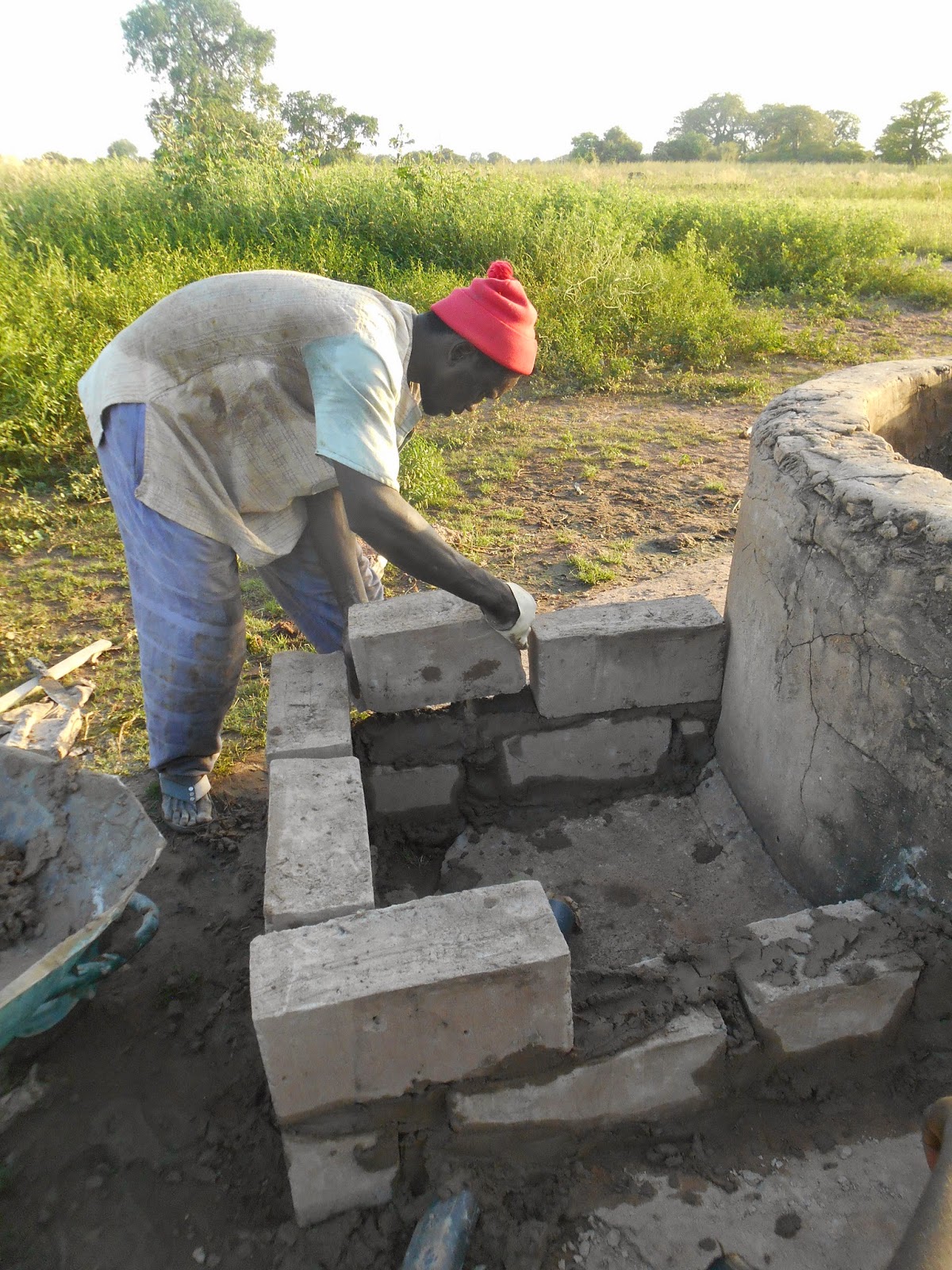Splash. Drip. Swish.
Gurgle. Slosh. Plop.
Splatter.
Water. It surrounds
us, making up to 60% of the human body and necessary for all life.
You wake
up. Flush the toilet. Wash your hands. Your face.
Brush your teeth. Step into the
shower... and you've already used
approximately 16 gallons of water. Add
your washing machine, dish washer, cooking, cleaning supplies, etc. Look at your plate, even if you're just
eating a meager salad there's 15 gallons
of water that have gone into growing the lettuce alone!
Water is
ubiquitous in our lives. But what if it
wasn't? What if you had the same needs
but no faucet?
 Every
morning and evening the girls and women of my village pull pan-after-pan of
water 25 meters (approximately 82 feet) to the top of our well, place it on
their heads, walk it back to their huts, and pour it into another pan waiting
on the ground. Since I too need water, I
can be spotted every evening at the village well with three other women, our
hands flying and clapping as we pull the heavy rope over the pulley. A full pan of water is 24 liters, meaning
that I carry 52 pounds of water 122-125 steps back to my hut.
Every
morning and evening the girls and women of my village pull pan-after-pan of
water 25 meters (approximately 82 feet) to the top of our well, place it on
their heads, walk it back to their huts, and pour it into another pan waiting
on the ground. Since I too need water, I
can be spotted every evening at the village well with three other women, our
hands flying and clapping as we pull the heavy rope over the pulley. A full pan of water is 24 liters, meaning
that I carry 52 pounds of water 122-125 steps back to my hut.  Beyond
personal consumption, my agrarian community depends on water for crops. That means our livelihood is reliant on
rainfall (a meager 521 mm from July-September) and groundwater from the
well. In the long months between rainy
seasons, my community works together to water their crops from well water. In an incredible sense of community; all the
women of my village pull water together for three hours or more, placing it on
one another's heads, carrying each benoir into the garden, taking it off, and
finally pouring the water into watering cans to use. Every day.
For at least five months. And then they pull water for the next day's
drinking, washing, cooking, cleaning, etc.
Beyond
personal consumption, my agrarian community depends on water for crops. That means our livelihood is reliant on
rainfall (a meager 521 mm from July-September) and groundwater from the
well. In the long months between rainy
seasons, my community works together to water their crops from well water. In an incredible sense of community; all the
women of my village pull water together for three hours or more, placing it on
one another's heads, carrying each benoir into the garden, taking it off, and
finally pouring the water into watering cans to use. Every day.
For at least five months. And then they pull water for the next day's
drinking, washing, cooking, cleaning, etc. So I proposed a feeder basin project for my community. A small basin next to the well connected to alarger basin inside the garden by pipe facilitates easier watering. Women pour water into the small basin and it cuts out the work of lifting, carrying, and putting down the water in the garden. It also encourages better watering practices since women are less likely to pour water from the top of their head directly onto their garden beds. Unsurprisingly, my community was pretty enthusiastic.
After
writing the grant and the harvests were in, my community supplied horse drawn
carts to carry supplies from our road town.
I explained construction requirements (thanks dad!) in French and Wolof
(thanks to my many language teachers!), and we completed the project in less
than a week
.
My village took the project a step further, saving money from their early harvest to purchase an inner tube balloon that can pull up four times more water when pulled by a horse or donkey.
Even though
it was just a small project and the well is only 27 meters away from the center
of the garden, the garden has grown exponentially since the water limitations
have been reduced. This year, every meter
of the garden is being worked. Even
motivated women from neighboring communities have joined us with four of their
own plots inside the garden.
The easier
access to water in the garden has meant higher yields. Meaning more vegetables going into each
family's lunch bowl. More vegetables and
cash crops being sold at the weekly market.
Meaning more financial autonomy for each of the ladies in the Mboure
Community Women's Group. Meaning
increasing financial sway in the family.
Meaning more money going towards education and hospital bills. Meaning a healthier and better educated next
generation.
So this
wasn't an enormous project, it was just a drop in the bucket.









No comments:
Post a Comment